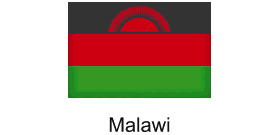 Malawi rew Railway development
Malawi rew Railway development
Malawi is looking to develop a railway line and associated services from the Central region to the Northern region. The transaction is set to be delivered as a PPP, to optimise the efficient delivery of railway services by leveraging the private sector. A tender has been issued and closes at 2:00 pm local time (Malawi) on 15th November 2022.
Malawi Railway Background
Malawi’s railway network is limited to the central and southern parts of the country and currently consists of 933km of mainline single cape gauge, of which 201 km is currently non-operational.
This network forms part of the Nacala and Beira Corridors offering Malawi access to seaports in Mozambique. It also forms part of the Northern Corridor; however, this is only through inland lake transport to Chilumba and by road connection which connects to the Tanzania Zambia Railway Authority (TAZARA) railway line in Mbeya, which eventually ends at the Port of Dar es Salaam.
An imbalance between road and rail maintenance and investment
The existing network transports an average of 300,000 passengers annually, mainly between Blantyre and Nayuchi. Over the years, a gradual shift of focus from investing in the preservation of rail infrastructure to the expansion of the road network has severely limited the operational capacity of the railway line to serve the needs of the country.
This has been compounded by flooding, ageing, breaching of embankments, and overgrowth of vegetation that has left this railway infrastructure, particularly the Limbe to Marka section, requiring several interventions ranging from rehabilitation to realignment and reconstruction before it can become fully operational.
Additionally, other supporting infrastructure such as shelters, station premises and warehouses are either lacking or dilapidated. While the southern region railway is disjointed and requires rehabilitation, the entire stretch from the central region to the northern region is non-existent.
Geographical positioning
Malawi is strategically situated where it is surrounded by Zambia to the west, Tanzania to the North and Mozambique to the east, all these three neighbouring countries among other transport systems, also rely on railways as a form of transportation of goods and services.
An opportunity, therefore, exists for Malawi to develop a railway network from the central to the northern region which could ultimately link some of the railways used by Zambia to other regions namely the northern Nacala railway to the TAZARA railway in Zambia.
Mining Presents The Biggest Appetite For Off-Take Opportunity
With the doubling of Copperbelt mining over the next five years, it is estimated that an additional 2 million tonnes of annual cargo will be required to pass through east African harbours.
Dar es Salaam and Beira are suffering from congestion and other constraints such that Malawi’s Nacala railway provides a much shorter overland distance solution than Maputo, Durban, or Richards Bay.
With the TAZARA open access network policy according to a recent desk study that was undertaken “Malawi-Salima Tunduma PFS executive summary”, “it is predicted that 2.1 million tonnes of annual transit mining freight could flow by rail through Malawi and be handled by the port of Nacala. The estimated volume is equivalent to approximately 100,000 Twenty-foot equivalent units (TEU) per annum or between two to three daily container trains”.
Based on typical current rail haulage rates of around $0.0775/tonne/km in the northern region, the above gross freight volumes might generate around $138m in annual revenues. Using current third-party rail haulage costs $0.025/tonne/km, this approach shows a potential surplus of up to $93m per annum for access fees and debt service as discovered by the desk research.
With the doubling of the Copperbelt mining, this significant additional volume of logistics capability in the Copperbelt is expected to be largely serviced by rail rather than road networks as both the roads and border crossings are congested, and trucking fleets have largely stayed dormant or diminished over the years thus reducing the haulage rates as they remain stagnant.
To address some of these challenges the new rail corridor via Nacala would benefit both Malawi and other countries for the following reasons;
It has an existing first-class railway connection via the Northern Development Corridor. The most efficient natural deep-water port on the east coast of southern Africa. Provides a shorter distance estimated at about a thousand kilometres shorter than the usual route of Katanga province to Maputo, Richards Bay or Durban.
